Georg Jäger
Towards Safe Path Tracking Using the Simplex Architecture
Mar 13, 2025Abstract:Robot navigation in complex environments necessitates controllers that are adaptive and safe. Traditional controllers like Regulated Pure Pursuit, Dynamic Window Approach, and Model-Predictive Path Integral, while reliable, struggle to adapt to dynamic conditions. Reinforcement Learning offers adaptability but lacks formal safety guarantees. To address this, we propose a path tracking controller leveraging the Simplex architecture. It combines a Reinforcement Learning controller for adaptiveness and performance with a high-assurance controller providing safety and stability. Our contribution is twofold. We firstly discuss general stability and safety considerations for designing controllers using the Simplex architecture. Secondly, we present a Simplex-based path tracking controller. Our simulation results, supported by preliminary in-field tests, demonstrate the controller's effectiveness in maintaining safety while achieving comparable performance to state-of-the-art methods.
Using Unsupervised Learning to Explore Robot-Pedestrian Interactions in Urban Environments
May 20, 2024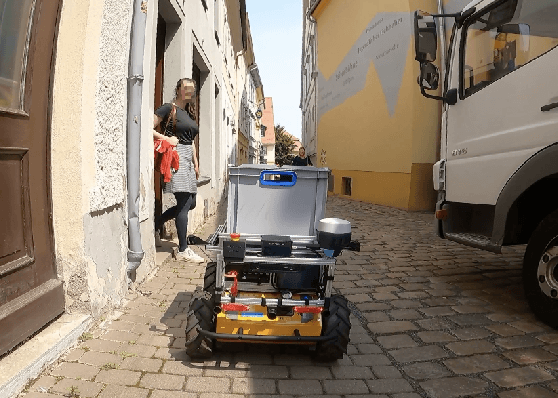
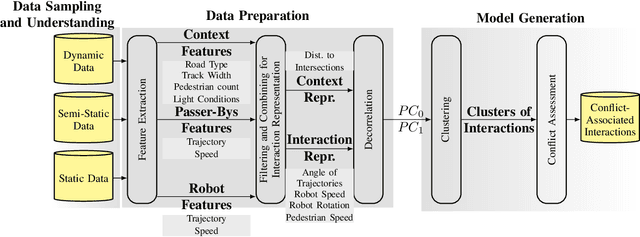
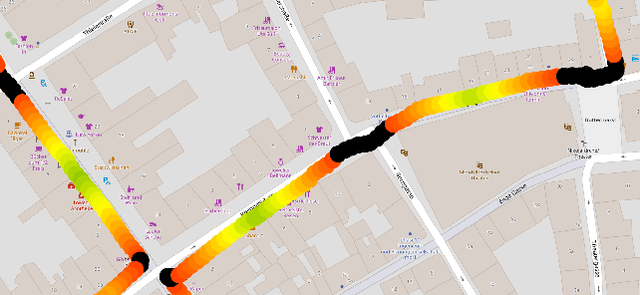

Abstract:This study identifies a gap in data-driven approaches to robot-centric pedestrian interactions and proposes a corresponding pipeline. The pipeline utilizes unsupervised learning techniques to identify patterns in interaction data of urban environments, specifically focusing on conflict scenarios. Analyzed features include the robot's and pedestrian's speed and contextual parameters such as proximity to intersections. They are extracted and reduced in dimensionality using Principal Component Analysis (PCA). Finally, K-means clustering is employed to uncover underlying patterns in the interaction data. A use case application of the pipeline is presented, utilizing real-world robot mission data from a mid-sized German city. The results indicate the need for enriching interaction representations with contextual information to enable fine-grained analysis and reasoning. Nevertheless, they also highlight the need for expanding the data set and incorporating additional contextual factors to enhance the robots situational awareness and interaction quality.
Towards Robot-Centric Conceptual Knowledge Acquisition
Oct 08, 2018
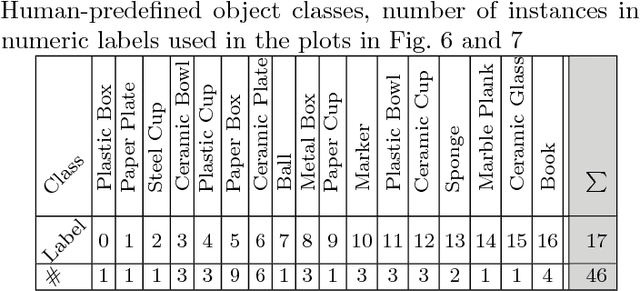
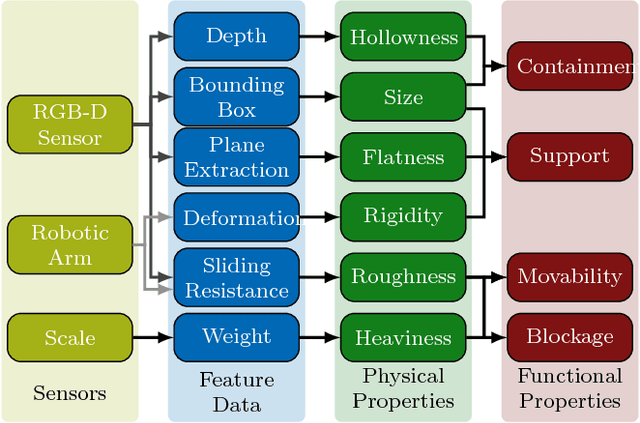

Abstract:Robots require knowledge about objects in order to efficiently perform various household tasks involving objects. The existing knowledge bases for robots acquire symbolic knowledge about objects from manually-coded external common sense knowledge bases such as ConceptNet, Word-Net etc. The problem with such approaches is the discrepancy between human-centric symbolic knowledge and robot-centric object perception due to its limited perception capabilities. Ultimately, significant portion of knowledge in the knowledge base remains ungrounded into robot's perception. To overcome this discrepancy, we propose an approach to enable robots to generate robot-centric symbolic knowledge about objects from their own sensory data, thus, allowing them to assemble their own conceptual understanding of objects. With this goal in mind, the presented paper elaborates on the work-in-progress of the proposed approach followed by the preliminary results.
 Add to Chrome
Add to Chrome Add to Firefox
Add to Firefox Add to Edge
Add to Edge